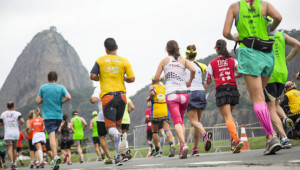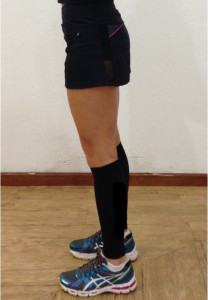Though popular, the beneficial hemodynamic and performance effects of stockings in sport are controversial. Some of the evidence is discussed below.
OSWALDO T CASTILHO JR Compression stockings are the universal conservative treatment option for the majority of venous disorders. Their use has been extended in sporting activities where they are growing in popularity. This is true especially in endurance activities like running. The variety of products specially manufactured for this use is wide and they are bought without the need of a medical prescription.
The literature regarding the effects and the efficacy of the use of these compression garments in running is controversial and inconclusive. The most recent studies showed that the use of compression garments promoted trivial benefits in running performance. However, there was no improvement in sprinting.
There were small positive effects in variables related to endurance performance defined as the time taken to exhaustion. These include improvements in running economy, biomechanical variables like a reduction in muscle oscillations/jolts and a decrease of blood lactate during wear (which increased after their removal). Furthermore, there were improvements in perceived exertion and markers of muscle damage and inflammation. Cardiac parameters and muscle temperature were not significantly affected. Compression stockings promoted beneficial effects on venous haemodynamics of the lower limbs of runners with CEAP 0 or 1 in a recent study using air-plethysmography on a treadmill.
The current consensus on the beneficial role of compression stockings in running is confined to slight improvements in recovery time with reduced muscle pain, damage, and inflammation on biopsy.
Compression has become popular in running. Colourful stockings covering the calf are shown.
A below-knee calf compression stocking used in running. Note that there is no foot component to the stocking.

